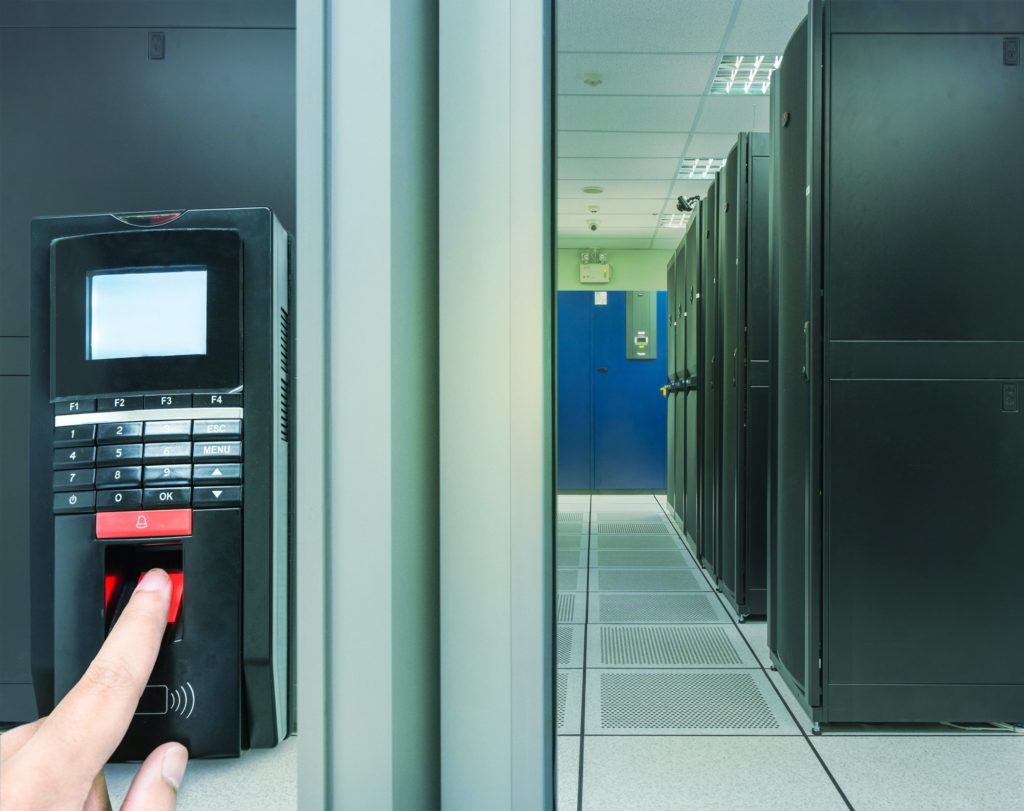Access control systems are changing rapidly, both in a physical environments like schools and in terms of digital devices like smartphones.
But how far can technology take us? We’ve teamed up with 2020 Vision to reflect on how the trends of access control systems have changed over the years, as well as looking at some changes that could occur in the future.
Let’s first look at how the most common access control media have evolved over the years.
Keypads
We started out with locks and keys, but technology advanced at a rapid pace. The way we entered restricted areas has changed over time — and it all started with the famous keypad.
Similar to what we now see on ATMs, these were used to access-locked areas that would require an individual to type in a specific numerical code to enter. The passcode would usually be around four to six digits long.
But was this a viable method to protect a business? At the time, it was a revolutionary idea, but it was fundamentally flawed as anyone who obtained the code – perhaps by looking over someone’s shoulder – could then enter. This was classed as a non-intelligent reader.
Card readers
Recognising the shortcomings of keypads, manufacturers developed card readers. Usually, a magnetic strip would be attached to the card which a staff member could then swipe through a narrow slot in order to gain access.
Cards have become more sophisticated over time, with barcode, proximity, smart card and biometric readers offering different pros and cons for various commercial applications.
IP door readers
IP readers were later introduced and could be accessed using multiple techniques, whether through scanning a card, or recently, Bluetooth-enabled smartphones.
Biometrics are now also common in IP readers.
Unlike card readers and keypads, IP readers can operate independently as they hold an internal memory. If the details you provide do not match what the IP reader has knowledge of, you will not gain access.
These technologies have emerged and evolved in just 50 years and progress shows no sign of slowing down. What innovations might we see in the coming years?
Smartphone access
On most smartphones, there are multiple ways you can gain access to the phone’s internal features. The use of passcodes is still common and are similar to keypads in terms of security merits and vulnerabilities.
Biometric access, through the use of the fingerprint, is relatively new and has revolutionised the way we get into our phones.
However, in 2017, Apple incorporated into its latest smartphone model, the iPhone X, facial recognition, with a 3D sensor recognising the phone owner’s facial features. I suspect similar features will soon be launched by Apple’s competitors and a number of smartphones will vie for the title of easiest to use and most secure.
However, convenience and simplicity – such as that offered by facial recognition, fingerprint scanning, Bluetooth access, or even a shorter PIN code – often comes at a price: they simplify access not only for the authorised user, but also for a potential attacker.
So when it comes to finding an access control system that is simple and convenient and offers strong security, always seek the advice of an experienced security integrator.
Where will the future take us?
‘Eyeball recognition’ is one thing we at 2020 Vision Systems predict will take off in years to come. No two people’s eye are the same, so DNA ensures that access is being granted to the right person. Even in extreme and unlikely circumstances – if someone were to obtain your eyeball! – they would still be unable to gain access.
Innovations often appear in the movies first, but typically misjudge how secure the systems depicted would actually be.
In Diamonds are Forever, the James Bond film starring Sean Connery, 007 tries to gain access through a ‘copy’ of someone’s fingerprint. Realistically, if this were to occur, there would be smudges on the fingerprint, which would trigger alerts and block access.
In Demolition Man starring Sylvester Stallone, a group of criminals try to escape a prison using the eye of a warden. In reality, this would not get past any sort of IRIS scan, as there is a detection process which determines whether the person is alive or not and a dead person’s pupil would not respond to any light that is around.
Where do you think access control systems will take us in the future? Will movies this year predict even greater possibilities?
And the bigger question is: will they be brought to life?
Subscribe to the IFSEC Insider weekly newsletters
Enjoy the latest fire and security news, updates and expert opinions sent straight to your inbox with IFSEC Insider's essential weekly newsletters. Subscribe today to make sure you're never left behind by the fast-evolving industry landscape.
Sign up now!

